Is the Quality of Products Made in China Really That Bad?
There is a common perception in the West that China only makes low-quality goods. In many people’s minds, a “Made in China” label may as well say, “This is a cheap, poorly-made product that will break within a few weeks.”

Internet Meme
Look at this meme — a great example of this commonly-held attitude. A small yellow car (representing Chinese goods) crashes into an orange bicycle (symbolizing German goods). The “Chinese” car crumples against the rear tire of the “German” bike. What’s funny, though, is that the car appears to be a Chevy!
We have all heard people talk negatively about Chinese goods at one time or another. However, we should stop for a minute to ask an important question — is this perspective warranted? Are goods from China really only worthy of the trash bin after minimal use? And how do you manage product quality if you plan to manufacture there?
Table of Contents
Chinese Manufacturing is Not Good or Bad — It’s Both!

Sure, there are poor-quality goods made in China and many other countries. However, memes like the car and bicycle don’t reflect the level of nuance needed to understand the situation.
As a third-party product inspection company, we’ve checked countless goods at factories in China and worldwide. After many inspections, we’ve seen that there are three types of Chinese factories:
- The ones that produce low-quality goods
- The ones that make high-quality goods
- The ones that produce whatever quality of goods you need — depending on how much you pay them!
While plenty of cheap consumer products come out of the country, there are also many Chinese brands that have made a name for themselves in recent years and are well-regarded. Consumer electronics companies such as Lenovo, DJI, and Xiaomi tend to be well-reviewed and have significant global market share.
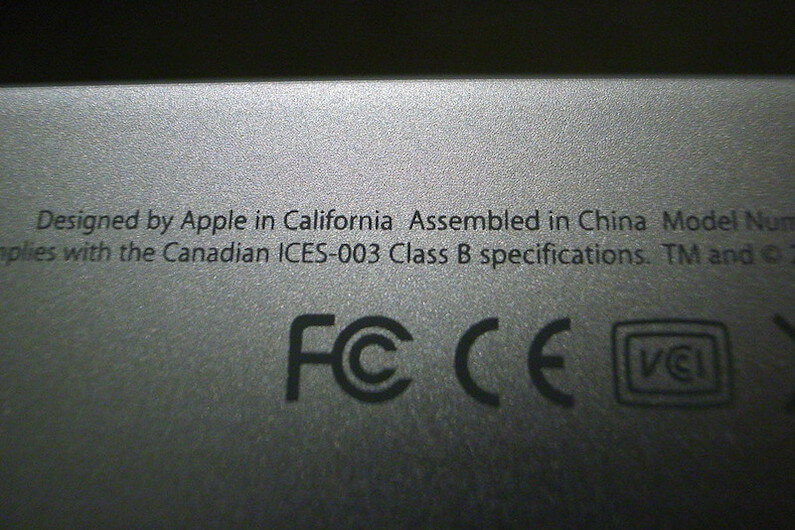
Image Source: Chen Zhao on Flickr
Well-known Western brands like Apple, Coach, and Armani make products in China that people regard as high quality and command high prices. They know that if they provide precise specifications, work collaboratively with suppliers, monitor their manufacturing closely, and get involved in quality control, they will be successful in making high-quality goods.
If you design a new smartphone, chest of drawers, or handbag and want to have it made in China, you can make low-quality goods or high-quality goods. The choice is up to you, but success depends on your skills in product design, supplier development, and quality control.
China is no longer the low-cost, low-skilled manufacturing country it once was. Those days are long gone, and it has emerged as a manufacturing powerhouse and moved steadily up the value chain.
China is Not “Cheap” — It Has Other Advantages
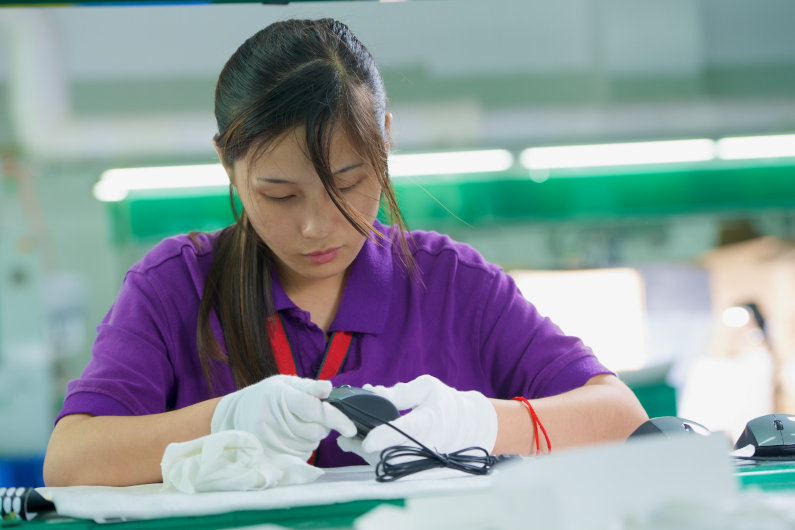
When China opened up to the world over 40 years ago, it was one of the world’s poorest countries. Western nations were able to take advantage of its massive population and workforce to help them produce many cheap consumer goods.
Today, China is an upper-middle-income country, and there are other places with cheaper labor costs — India, Vietnam, and Bangladesh, for example. While these countries have been growing their manufacturing sectors, especially for labor-intensive goods, China still has an immense pull that consistently draws in foreign buyers.
Here are three key reasons why brands decide to make their products in China:
- Efficiency: China has developed a robust manufacturing infrastructure, efficient logistics, and a skilled workforce. This streamlines production, reduces costs, and enables high-value product manufacturing.
- Scale: China’s vast population and labor force enable unmatched manufacturing scale and capacity. This is particularly vital for competitive industries like electronics, textiles, and consumer goods.
- Integration: China has developed well-integrated supply chain ecosystems to optimize raw material sourcing and assembly. This helps reduce lead times and meet market demand promptly.
 As Tim Cook, the CEO of Apple, said:
As Tim Cook, the CEO of Apple, said:
“There’s a confusion about China. The popular conception is that companies come to China because of low labor cost. I’m not sure what part of China they go to, but the truth is China stopped being the low-labor-cost country many years ago. And that is not the reason to come to China from a supply point of view. The reason is because of the skill, and the quantity of skill in one location and the type of skill it is.”
As Tim Cook indicates in the quote above, China is no longer a low-cost, low-skill country. It has undergone a modernization process and seen an explosion in its manufacturing sector. Let’s talk about that evolution.
Chinese Manufacturing Has Evolved Over Time: This is How

Over the last 40 years, China has gone from an agricultural economy to the world’s leading manufacturer. In 2022, China produced $4.98 trillion worth of goods, accounting for about 30% of all global manufacturing output.
During the last few decades, its manufacturing sector has matured significantly. Factories have improved their processes, quality control, and worker training. Wages and labor costs have risen along with the level of skill and technology in factories.
For example, when labor was cheaper, a plastics factory could quickly push out high volumes of plastic parts with many defects from their injection molding machines. Then they would have workers manually trim and rework them as needed.
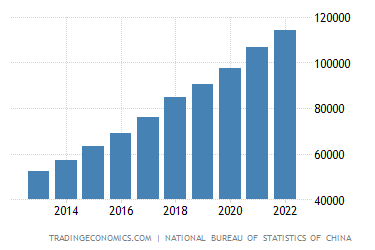
China Average Yearly Wages
Source: tradingeconomics.com
With rising labor costs, that factory had to adapt by operating more efficiently and producing better quality from the beginning. The factory owners and managers also might have realized at some point that they could reorganize the layout of their factory to ensure more lean and efficient operations.
They also would have become more aware of the quality standards and typical requirements of companies in the countries they export to. We’ve seen many factories in China follow this trajectory.
The reality is that, as an importer, if you want to produce very high-quality products in China as luxury brands do, nothing is standing in your way. Some companies make low-value products in China intentionally. However, some do so accidentally, as there are pitfalls to avoid.
Why Do Low-Quality Products Still Come Out of China?

Image Source: Paul Hussey on Flickr
First, you should understand that, like it or not, there is a demand for low-quality products in Western countries. Many global brands realize they can get more sales of their products by selling them at a lower price. To do this, they very consciously choose to sacrifice quality.
As a buyer going to China, you will find factories that can produce your products to various quality standards. It comes down to the demands the brands place on them and how willing they are to spend money on better materials and quality control.
If you come to the factory and say, “I want you to make the highest-quality products for me, and I want you to produce them at rock-bottom, below-market costs,” you are starting things off on the wrong foot.
It would be better to recognize that while you can make products in China at a lower cost than in the West and still get good quality, trying to push your costs down too far is counterproductive. You get what you pay for. Therefore, having reasonable expectations and not focusing on price as the sole factor guiding all your sourcing decisions is infinitely better.
Another thing to consider is that you must design your products well and manage the relationship effectively when dealing with Chinese factories. Otherwise, you risk painful, unexpected quality issues or quality fade that can lead to high defect rates or product recalls. Let’s talk about how to manufacture your product competently.
How to Manage China Factory Relationships and Avoid Quality Issues

If you are thinking of manufacturing your product in China, there are many factories that can and will make things exactly the way you want them. It is crucial, though, that you do three key things:
- Audit: Thoroughly assess any manufacturer you work with by conducting on-site audits at the factory before the first order and periodically after that.
- Specify: Set expectations by consistently providing clear product specifications and ensuring that your supplier agrees to them.
- Control: Develop your own quality control plan, and implement measures such as inspections and testing to regularly verify the quality of work.
We have a saying in our industry that “quality begins with the buy.” As a third-party inspection company, clients sometimes come to us thinking that product inspections are the key to quality, but you can’t inspect quality into a product.
Quality begins with design, and many quality issues you come across in China are actually design issues. If you’ve developed a product with materials, components, or assembly that won’t meet customer needs, it doesn’t matter if the factory produces them precisely the way you asked — the product will be low quality.
Another problem that many companies run into is quality fade. In essence, the factory begins secretly making material substitutions due to the following:
- Pressure to meet your price targets
- A lack of precise specifications, or
- Your complacency with quality standards
As such, the three keys we outlined above are essential if you want to ensure product quality.
Remember That it Falls on the Brand to Ensure Product Quality

Each brand is responsible for deciding how important product quality is to them. Producing high-quality goods in China requires working with suitable suppliers on the basis of mutual respect.
There is a range of suppliers in China with varying capabilities. To get good quality, you should design your products well, provide clear specifications, and plan and implement your own quality control measures. That way, you can get the exact output you are looking for.
Brands that don’t do these things should not be surprised when consumers don’t view their products as high quality. If you’d like to learn more about the distinction between price and quality and how to manage your product’s quality, we recommend downloading the guide below.
Free Guide
Stop Making the same silly quality mistake!
- Learn the secrets to "high" quality products - that save you money!
- Never be confused again by complicated quality data
- See the steps to increase customers' confidence in your brand
Please Note: This article was originally published on August 19, 2019 and has since been updated.

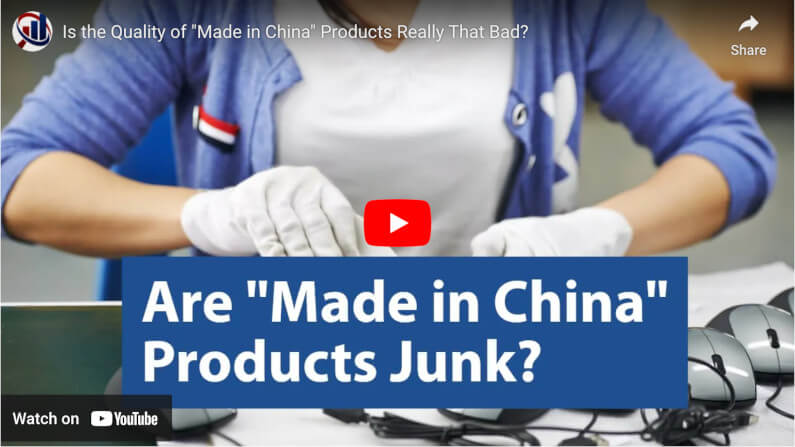
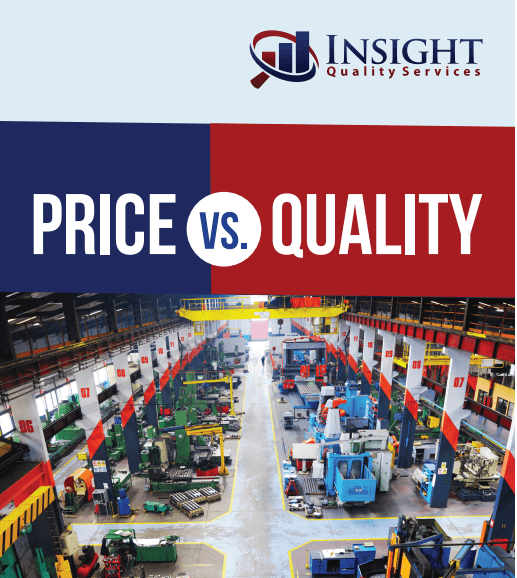


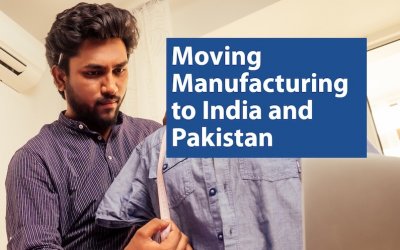
Very realistic and useful article. I like it👍
Actually the photo of the car crushed by the bicycle is an American car, and the Gamma Bicycle brand is owned by a Chinese company’; made in China.
Which reinforces that memes such as this one don’t necessarily reflect the level of nuance needed to understand the situation.
90% of things produced in China is total S*%^.
(Edited for profanity)
To make a good product, the onus is on the brand to provide proper specifications, develop clear quality standards, and establish an effective quality management system.
High- and low-quality goods are produced everywhere, so we often urge importers to understand that “quality begins with the buy.”
I get the point that buyers are responsible for quality control but China is shipping factory seconds that are not doing what they’re supposed to do ie left hand tools, lids that don’t fit, vacuums don’t suck, air mattress not made to the design that’s printed on it. All my recent non food purchases have something wrong wth it.
Please note that there are many manufacturers in China, and it is not a single entity shipping these goods. The quality level of different manufacturers will vary as will the quality control management of different Western brands.
Problem with Chinese manufacturers is they don’t allow criticism, it’s against the law there. So a operator won’t complain or call quality control. And many of the workers don’t use western products and don’t know how they work. So they don’t know if there’s a problem. Some resent being forced to work in factories instead of traditional farming and don’t care. And a billion people market they can sell factory seconds with impunity. That market doesn’t have regulations to protect consumers. They don’t have good labour laws so workers are scared. Try staffing a Chinese factory wiyh western quality control staff it won’t work.
Insight Quality’s team members have decades of experience working with factories in China. The statement that “criticising Chinese manufacturers is illegal” is patently incorrect, as are the other statements made here.
Back in 2017 there was high quality clothing made in China by name brand firms but in 2023 the quality has nose dived down due to manufacturers restructuring to keep unit cost low while labor costs have risen sharply. Added to this is the sinking pool of skilled factory workers retiring and the youth of China not wanted to do factory work any longer.
Sorry to hear about your experience with the suppliers in your network. There certainly has been a labor shortage in recent years and many young people don’t want to do factory jobs. It is always good to consider new suppliers, whether in China or elsewhere when you run into such issues. These days, a lot of clothing manufacturing has shifted to places like Vietnam, Turkey, Guatemala, and Bangladesh, while China is more focused on production that is higher up the value chain.
I wondered once: you hear about italian cars being yuck but they are around. Also french cars. But never heard of a chinese car. Yes they do have manufacturers and dealer ships but I havent found any chinese cars sold outside of China. No body wants them. Like the chinese gas and electric scooter that abound. Plastic Junk Junk Junk. You think there would be a decent car or scooter. Maybe they are just happy taking the worlds money and take no pride in quality.
It’s interesting you mentioned Chinese cars, as the country recently became the largest exporter of cars in the world (BBC). The Tesla Gigafactory in Shanghai is exporting many cars to various countries. And recently, companies like MG, BYD, and others have made significant inroads in Europe, Asia, Latin America, and Australia.
In the past, Chinese brands did not make a big push to sell their cars outside of China, since the market in China is so huge (it’s the world’s largest market for cars) and the quality wasn’t quite where it is today. However, they have leapfrogged many producers in EVs.
If you are in the US, you won’t see any Chinese cars around right now, since there is a lot of political resistance from the US government. It may eventually happen, though, with the cars being made in Mexico.
Per Fortune: “China has become a powerhouse in electric vehicles. Its automaker BYD recently topped Tesla in global EV sales, with Elon Musk warning of Chinese carmakers, ‘If there are no trade barriers established, they will pretty much demolish most other car companies in the world. They’re extremely good.'”
Sounds like CCP sponsored trash.
We stand by the information we present and have no affiliation with any government — just years of experience helping companies get better results from their supply chains.
I noticed something in the clothing sector. The stuff that they are selling to Americans and Europeans in their physical stores or online like Amazon, Walmart etc. are really awful and substandard. The sewing is not good. The sizing is wrong and the designs are not up to par. The designs are totally cheap with no detailing, unlike what you get from designers like Calvin Klein, Jones New York, Ralph Lauren, or the clothing made within the European countries. They should be banned from selling this crap and shocking the customers who can tell the difference.
Unfortunately many shops cannot do not ship from Europe so I think government rulings is to blame and are one-sided in this affair.
Government regulations, particularly in the USA and Canada, focus on the product’s safety and compliance with government standards and are not related to quality.
Each of the brands you mention (Calvin Klein, Jones New York, Ralph Lauren) produces apparel in China.
An old quality adage is “Quality begins with the buy.” This translates into meaning that if specifications — including non-regulatory points such as stitching, design, fabric quality, etc. — are not provided to the factory when placing an order, then the quality of finished goods will be unknown.
Many factories produce a wide quality range of goods depending on the buyer’s requirements.
“….including non-regulatory points such as stitching, design, fabric quality, etc. — are not provided to the factory when placing an order, then the quality of finished goods will be unknown.”
Yah but, non regulated points can universally known items like understanding sizes common to the markets or finishing a stitch line to the hem. If the buyerdies not stipulate that a lid fits the blender that doesn’t mean the factory needn’t make fitting lids.
Every brand must take responsibility for the quality of their own products, including selecting the right manufacturers (in China or elsewhere) and taking the steps needed to manage quality control.
Mr. Church, you should admit that you’re a consultant for companies marketing Chinese manufactured goods and raw materials. Secondly, you are wrong in stating that “…there is a demand for low-quality products in Western countries.”I’d venture to state unequivocally that no Western consumer ever demanded low-quality products or goods. Western consumers like other global consumers demand quality in all their purchases, and you could fairly state that consumers may opt for the lower price in comparing products (I don’t) but it is absurd for you to say that consumers WANT low quality. You probably won’t publish this but consumers deserve truth.
Robert,
Insight does provide quality assurance services and compliance consulting to companies that manufacture products in China and many other countries.
We appreciate your comments but stand by our article and believe that while consumers may not want low-quality products, there is a demand for low-quality products.
When we talk about “demand” in the article, we’re using it in an economic sense, which would be defined as a “willingness and ability to purchase a commodity or service.” (Merriam-Webster) We’re not trying to say that people necessarily prefer low-quality goods.
The primary point of the article is that quality begins with the buy. And to your point, that applies to both the end consumer and the company manufacturing the product.
Our team is proud of the services we provide to our clients.
We help them ensure the products they order — that ultimately end up in the hands of the end consumer — are compliant with the regulations in the country of importation and meet our clients’ quality standards.
-Andy
So what Andy is saying to Robert is buyer beware. That is negating consumer protection and why we need quality control in Chinese factories. Stop selling factory seconds for high prices. Prices have never been so high and quality so low.
The point Andy is making in the comment above is not “buyer beware.” Instead, the point is to take responsibility for the quality of your own products by a) designing your products well b) providing precise specifications to the manufacturer c) doing due diligence to select the most suitable manufacturers d) understanding the strengths and weaknesses of the manufacturer and developing suppliers e) maintaining a presence at the factory to manage quality.
Yea, ridiculous statement. The truth would be that many want cheaper products, but getting unsafe garbage is not what anyone wants!
Hi Cass,
Thanks for your comment. You’ve mentioned safety, but we generally separate quality and safety into two categories. We can use pajamas as an example.
Quality: If the stitching comes apart sooner than expected, disappointing the wearer, this would be a quality issue, but it doesn’t impact safety.
Safety: It would be a safety issue if the pajamas catch fire too quickly because they don’t meet federal flammability standards.
As such, the conversation about quality vs. safety and regulatory compliance is somewhat distinct. For more information about this, see our Quality vs. Compliance article.
Regarding the statement you mentioned being ridiculous, it might have been more clear to say:
“Many people buy low-end goods because they are inexpensive. Often, low-end brands consciously lower their quality standards to keep their costs low and the goods cheap. Some consumers are disappointed by the experience of buying from those brands.”
We recommend that when you are thinking about buying from a brand and are concerned about quality, it’s best to consider the reputation of that brand rather than thinking about whether they manufacture some or all of their products in China.
Even the reputation doesn’t work anymore. I can think of 3 famous and trusted brands I have recently bought from and something was wrong. One of didn’t even make the product according to the picture on the product. And it was more expensive than I ever have bought those things before.
Sorry to hear about your experience. Many countries have experienced high inflation recently, and in the US there are many tariffs on Chinese products, which also increases the cost to the consumer. The brands you mentioned will likely take a hit to their reputation if others experience the same thing you have.
My wife’s friend just stormed out of the house because I stated that Chinese-made goods are high quality and I’ve always been delighted with them. Your article explains it all.
Thanks for sharing. While not all Chinese goods are high quality, there are many great products made in the country.
Correction, Apple, Armani, and other above-mentioned items are not originally coming from China, they may have put their factories in China, but they are not originally from China, just like Apple, Apple establish in the US but due to the high cost of property and China offered “cheapest” property cost and among other cheap offers, and since then, the IOS system is bug, the board is quickly heated up and apple also recalled some new brands that were manufactured in China, I’ve work as tech support so don’t tell me that it wasn’t true, as for the Armani, since they’ve established their factory there, nobody trust ARMANI products for a fear that it came from China, we have Armani bags and among other items in the streets of the Philippines.
Thank you for sharing your thoughts. You are correct that Apple and Armani are not Chinese companies, however, they have significant manufacturing operations in China and have for a long time.
When it comes to Apple, as far as we know, they have been making the iPhone in China since essentially the beginning.
According to Tim Cook, CEO of Apple:
“There’s a confusion about China. The popular conception is that companies come to China because of low labor cost. I’m not sure what part of China they go to, but the truth is China stopped being the low-labor-cost country many years ago. And that is not the reason to come to China from a supply point of view. The reason is because of the skill, and the quantity of skill in one location and the type of skill it is.”
The key point we are trying to make in the article is that the quality of products starts with good design and requires companies to manage quality control and assurance at every step, regardless of where their products are made.
Great products are made in China. Terrible products are made in China too. It is the responsibility of the brand to ensure quality and make good supply chain decisions, rather than blame the entire country the product is made in.
Sure to say that Chinese make junk would be to overstate it.I have purchased quality products from there. So what im hearing is that the brands are knowingly buying factory seconds that have something wrong with them and selling them here.
Yes, to reiterate, there are high-quality and low-quality products made in China. We would simply state that brands are responsible for managing the quality of their products and should make every effort to manage their supplier relationships and the quality of their products well.
I read your article. I read the comments. there was no supporting data(in numbers) in the article or the comment responses, largely made by you, yourself. none. I would think someone like you would have supporting data at their fingertips and be at the ready to cite that data to support their beliefs. yet, with you, there is none. just verbiage. I could cut deeper, but won’t. I would just like to tell the commenters of this article to read “10 Common Disputes With Chinese Suppliers And How To Overcome Them!” by Renaud anjoran for more believable articles than your seemingly senseless, obstinate, non-data supported responses. for example: everyone in the USA has experienced poorly manufactured products and you are telling them their experiences were unfounded. supporting data always makes the verbiage around it more believable.
Hi Bill,
It seems you may have misinterpreted the article. Data is normally required to support specific claims, and the claim in the article is very simple. In the first subheading we say that “Chinese Manufacturing is Not Good or Bad — It’s Both!”
In other words, we claim that:
1. Some products made in China are high quality, and
2. Some products made in China are low quality.
If you want proof that some products are high-quality, it’s very simple. Go to Amazon and search for the “DJI Mini Pro 4” drone. You will find a camera drone that costs over $1,000 and has a 4.6 star rating with 1,400+ reviews. DJI is a Chinese company that is widely regarded as the industry leader, and the drone is manufactured in China. This is simply one example of many.
You already seem to have experience with Chinese products that have not met expectations, and there are examples of that as well.
The purpose of the article is simply to state that:
1. If you are a private brand and want to manufacture high-quality products in China, you can do it. However…
2. Making good products in China requires that your brand puts a strong focus on quality, chooses the right suppliers, and manages factory relationships effectively. It always falls on the brand to ensure quality, and you must have a strong sense of responsibility.
The article you referenced is a good one, and we might recommend taking similar actions if a brand encounters one of the 10 situations mentioned. However, nowhere in that article does it say that all Chinese products are low quality or that all Chinese suppliers are bad. In fact, the author of the article has his own contract manufacturing facility where he makes products… In China.